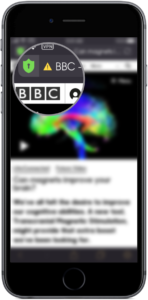We are thrilled to have just released SnowHaze version 2.5. This version of SnowHaze comes with many new and exciting features! In this article, we are covering in detail some of the new and improved features in SnowHaze 2.5. The release notes of version 2.5 can be found here.
Open Source
TL/DR: SnowHaze is now fully open source!
We are very proud to announce that SnowHaze is now fully open source. As a company pushing privacy and security, it has always been a goal for us to provide the source code for SnowHaze. Many people rely on SnowHaze every day. To be sure, that everything you do with SnowHaze is private and safe we make all of SnowHaze’s source code publicly available.
Why have we not been open source in the past you ask? We want to do what we preach and we would like to address this legitimate question honestly.
When we released SnowHaze 1.0 on July 27th in 2016, there was neither SnowHaze VPN nor a subscription plan. To push the development up to the version released today, we chose a transparent and fair revenue model. The app was not available for free and the revenue covered the development cost of the versions that followed. Thus, making the source code publicly available posed a risk for us. Somebody could have just copied the code and made an identical app available free of charge. To secure the revenue for the further development, we decided not to publish the source code until the revenue was more robust. This business decision ultimately secured the further development of SnowHaze and led us to where we are today. Since SnowHaze can be downloaded for free, making the source code available is not a risk any longer. We can proudly say that we have a steadily growing revenue that allows us to publish the source code today.
You can find the SnowHaze source code here.
It is an honor for us to have your support and we are satisfied to have made it to this point with your help. Now, with making SnowHaze open source, we take a big step towards our ultimate goal of a community-driven SnowHaze, where the privacy and security of SnowHaze help people to regain freedom in the digital world.
SnowHaze VPN IPSec
TL/DR: SnowHaze additionally offers IPSec VPN connections from within the SnowHaze app!
Let’s back up a little to get a quick overview of SnowHaze VPN. Before version 2.5, SnowHaze VPN used the OpenVPN protocol for all VPN connections, which is only possible with the third-party app “OpenVPN Connect”. As the first and only VPN provider SnowHaze VPN uses identical login credentials for all VPN users. We cannot distinguish between VPN users, as our competitors can.
Just on a side note, protocols like OpenVPN define the way of communication between the client (your iOS device) and the VPN server.
New Apple guidelines no longer allowed us to solely rely on a third-party application to establish the VPN connection. We took this chance, went back to the desk, and redesigned the VPN section from scratch. Now, SnowHaze VPN is much more comfortable and you can do everything from within SnowHaze. However, for legal reasons, only the protocol IPSec could be used for connections from within SnowHaze.
As of version 2.5 SnowHaze VPN now supports both OpenVPN and IPSec. While you can establish IPSec connections directly from within SnowHaze, OpenVPN connections work just like before version 2.5 with the app “OpenVPN Connect”.

What do these changes mean?
We initially chose the setup with the OpenVPN protocol and the “OpenVPN Connect” app, as it allowed us to offer the best security and privacy possible. We are still the only VPN provider that uses identical login-credentials for every user.
Unfortunately, it was not possible to setup IPSec in a way that allows us to have all our users share the same login credentials. But under no circumstances did we want to do what our competitors do – have unique login credentials for every user. To still guarantee a private authorization process we created a new process.
Every day, every IPSec user gets 100 unique login credentials with the valid token. Because all users share the same token, we do not know who gets which set of login credentials. From these login credentials the user randomly chooses a different set for each session. Although unique login credentials are used, we cannot link different sessions or identify individual users!
Below you can find a table that summarizes the advantages and drawbacks of the different protocols and setups.
| OpenVPN | IPSec | |
| Advantages | More secure protocol
Single login credentials |
Better usability; everything can be done within SnowHaze
Unique login credentials changing with every session |
| Disadvantages | Third-party app is needed to establish the connection | Less secure protocol
|
If you have been using SnowHaze VPN before, nothing changes for you and you can still use it the way you are used to! Additionally, you can switch to IPSec connection and thus benefit from better usability. Both options are included in any subscription and you may always switch between the two.
Should I choose IPSec or OpenVPN?
This is an important point to consider when using SnowHaze VPN or any other VPN for that matter. It is easier for you to set up an IPSec connection with SnowHaze VPN because you do it from within SnowHaze. OpenVPN – on the other hand – requires the app “OpenVPN Connect”. Once a month, you have to export the new OpenVPN profiles from SnowHaze to “OpenVPN Connect”. As you can see, regarding usability IPSec is the leader against OpenVPN.
However, IPSec is known to be slightly more vulnerable than OpenVPN. Clearly, this does not mean that OpenVPN is unbreakable neither that IPSec is insecure, but from a security standpoint, we recommend to stick with OpenVPN.
To sum it all up: If the additional steps required to establish an OpenVPN connection make you not use a VPN at all, then go for the IPSec connection that is much easier to establish right from within the SnowHaze app. While the IPSec connection is not the most secure option, you are still way ahead of the majority of internet users regarding protection.
Strip tracking parameters from URLs
TL/DR: SnowHaze is the first iOS browser able to de-personalize URLs!
This newly introduced feature is the most exciting one concerning privacy. Often, links contain unnecessary parameters that are used solely for tracking.
Let’s consider an URL like ‘www.abcdefg.co/page_3/tracking_id:”123-123-123″‘. Now, let’s assume this URL was shared with you. If we omit the tracking ID in the URL, e.g. ‘www.abcdefg.ch/page_3/tracking_id:””‘ or ‘www.abcdefg.ch/page_3/’ and the URLs still lead to the exact same page as the original URL, then the parameter ‘tracking_id’ can be considered as unnecessary and only hurting your privacy.
As the only browser on iOS, SnowHaze now offers to strip such tracking parameters from URLs. Every time you visit a URL containing this kind of personalization, SnowHaze offers you to remove all parameters known to be unnecessary from the URL. Currently, the function is based on a blacklist, which is regularly updated. Although we do our best to keep the blacklist clean and up to date, we decided to prompt the user every time SnowHaze finds parameters that can be left out. This way we can provide a smooth browsing experience and reduce the number of broken pages to a minimum.
Please note that this setting is turned off by default, as some people might find the prompts annoying. So, do not forget to turn it on!
Protection from dangerous links
TL/DR: SnowHaze now offers XSS protection!
Another noteworthy new function is the XSS (cross-site-scripting) protection. According to several studies, cross-site-scripting remains one of the biggest threats on the internet. Several different cross-site-scripting attacks are possible. The main concept is that HTML properties are abused to make the user run scripts on the device, which may be malicious.
We have added a new functionality to SnowHaze to prevent XSS. SnowHaze looks for specific patterns in HTML code and the URL to find potential XSS. Whenever SnowHaze detects possible XSS, the user is asked whether or not the particular script should be blocked.
Additional newsworthy functions
Indication of unsecured sites
It is easier than ever before to encrypt a website. In fact, there’s no reason not to use HTTPS. Unfortunately, there’s still a large number of (major!) websites not using HTTPS. Visit this site to see which sites. We want to make people more aware of unencrypted websites and the associated risk. Therefore, we chose to mark unencrypted websites with a yellow “danger sign” in the URL bar, as you can see in the image below.

Free trials
It’s not new as of 2.5, but we’d still like to mention it. If you are a new subscriber, you get the first week of the subscription for free.
Summary
With version 2.5 a lot of things have changed and we added new exciting features.
First of all, SnowHaze is now fully open source.
SnowHaze VPN offers now both OpenVPN and IPSec connections. While OpenVPN can be used just like before, IPSec connections can now be established easily within the SnowHaze app. IPSec connections are possible without any third party application with only a few clicks. It really is much more convenient 😉
We are thrilled to have you on board with us. Please reach out to us if there is something you do not like and tell your family and friends if there is something you do like! We read and reply to every message and really appreciate your feedback.




